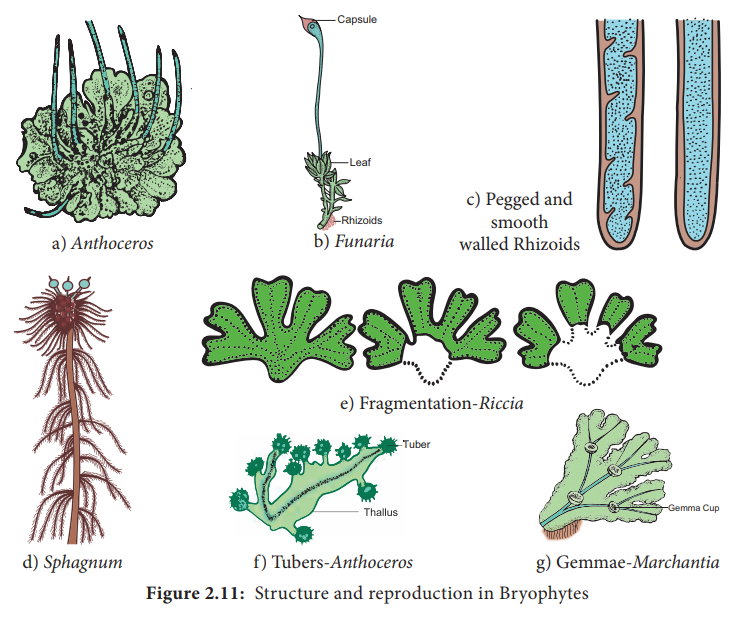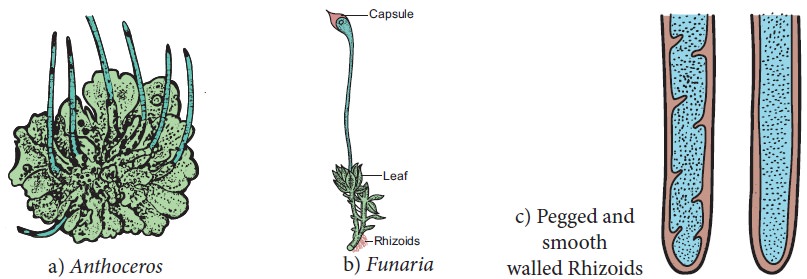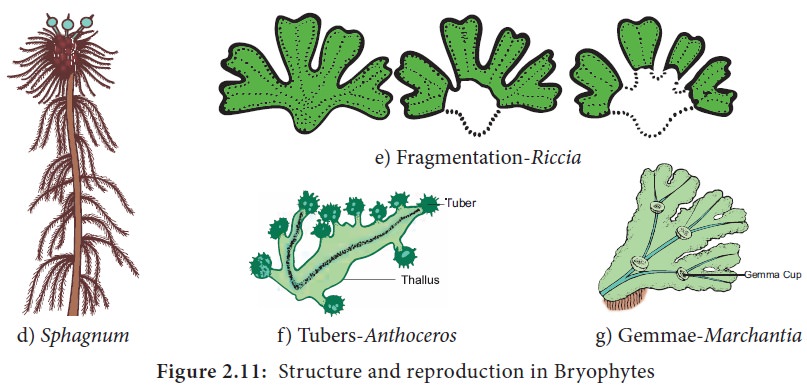Chapter: 11th Botany : Chapter 2 : Plant Kingdom
General characteristic features of Bryophytes

General characteristic features
•
The plant body of bryophyte is gametophyte and is
not differentiated into root, stem and leaf like structure.
•
Most of them are primitive land dwellers. Some of
them are aquatic (Riella, Ricciocarpus).
•
The gametophyte is conspicuous, long lived phase of
the life cycle. Thalloid forms are present in liverworts and Hornworts. In
Mosses leaf like, stem like structures are present. In Liverworts thallus grows
prostrate on the ground and is attached to the substratum by means of rhizoids.
Two types of rhizoids are present namely smooth walled and pegged.
Multicellular scales are also present. In Moss the plant body is erect with
central axis bearing leaf like expansions. Multicellular rhizoids are present.
The structure and reproduction in Bryophytes is given in Figure 2.11
•
Vascular tissue like xylem and phloem are
completely absent, hence called ‘Non vascular cryptogams’.
•
Vegetative reproduction takes place by the
formation of adventitious buds (Riccia
fluitans) tubers develop in Anthoceros.
In some forms small detachable branches or brood bodies are formed, they help
in vegetative reproduction as in Bryopteris
fruticulosa. In Marchantia propagative organs
called gemmae are formed and help in reproduction.


• Sexual
reproduction is Oogamous. Antheridia and Archegonia are produced in a
protective covering and are multicellular
• The
antheridia produces biflagellate antherozoids which swims in thin film of water
and reach the archegonium and fuse with the egg to form diploid zygote.
•
Water is essential for fertilization.
• The zygote is the first cell of the sporophyte generation. It undergoes mitotic division to form multicellular undifferentiated embryo. The embryogeny is exoscopic (the first division of the zygote is transverse and the apex of the embryo develops from the outer cell) . The embryo divides and give rise to sporophyte.
•
The sporophyte is dependent on gametophyte.
•
It is differentiated into three recognizable parts
namely foot, seta and capsule. Foot is the basal portion and is embedded in the
gametophyte through which water and nutrients are supplied for the sporophyte.
The diploid spore mother cells found in the capsule region undergoes meiotic
division and give rise to haploid spores. Bryophytes are homosporous. In some
sporophytes elaters are present and help in dispersal of spores (Example: Marchantia). The spores germinate to produce gametophyte.
•
The zygote, embryo and the sporogonium constitute
sporophytic phase. The green long living haploid phase is called gametophytic
phase The haploid gametophytic phase alternates with diploid sporophyte and
shows heterologous alternation of generation.
Related Topics